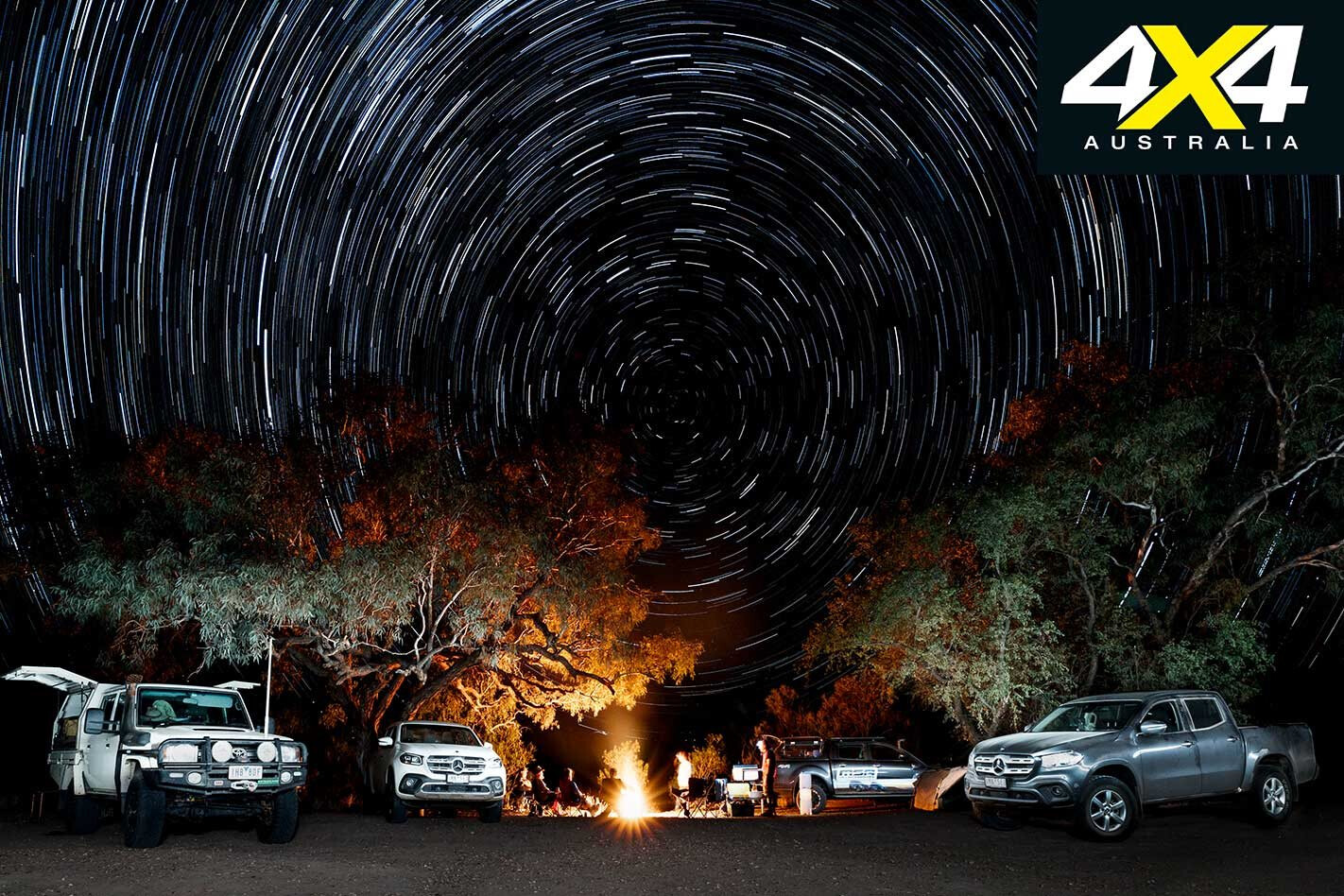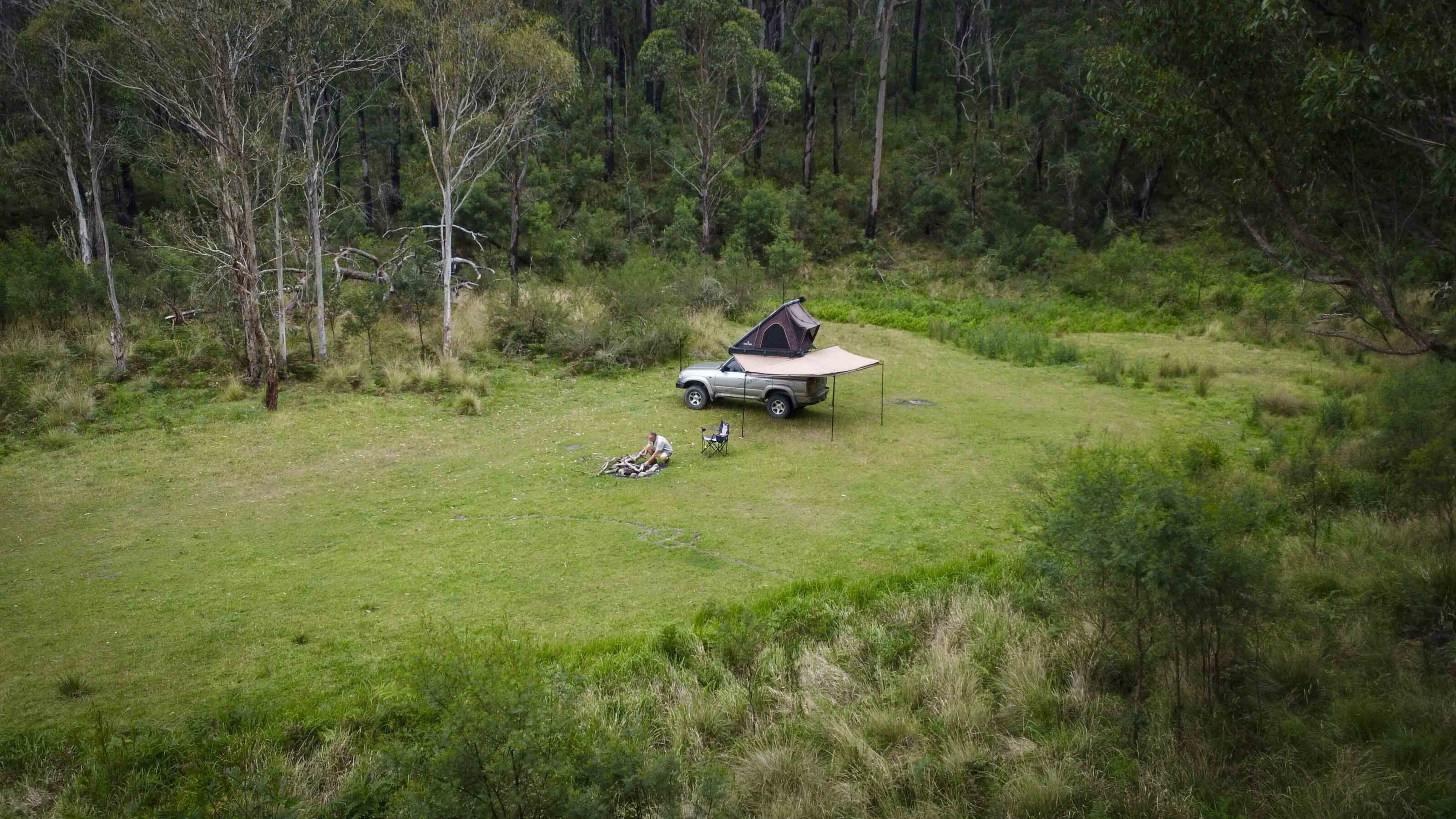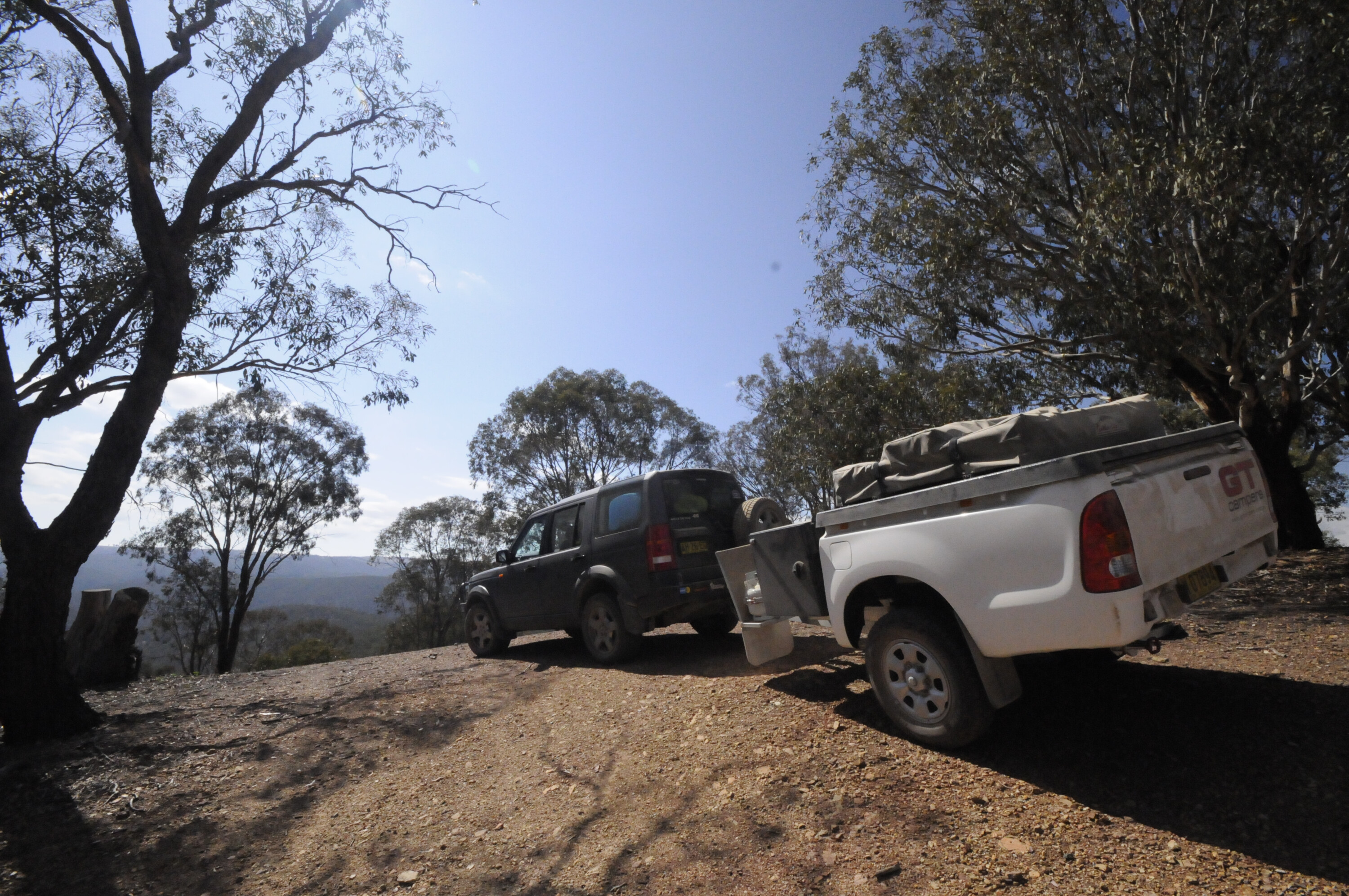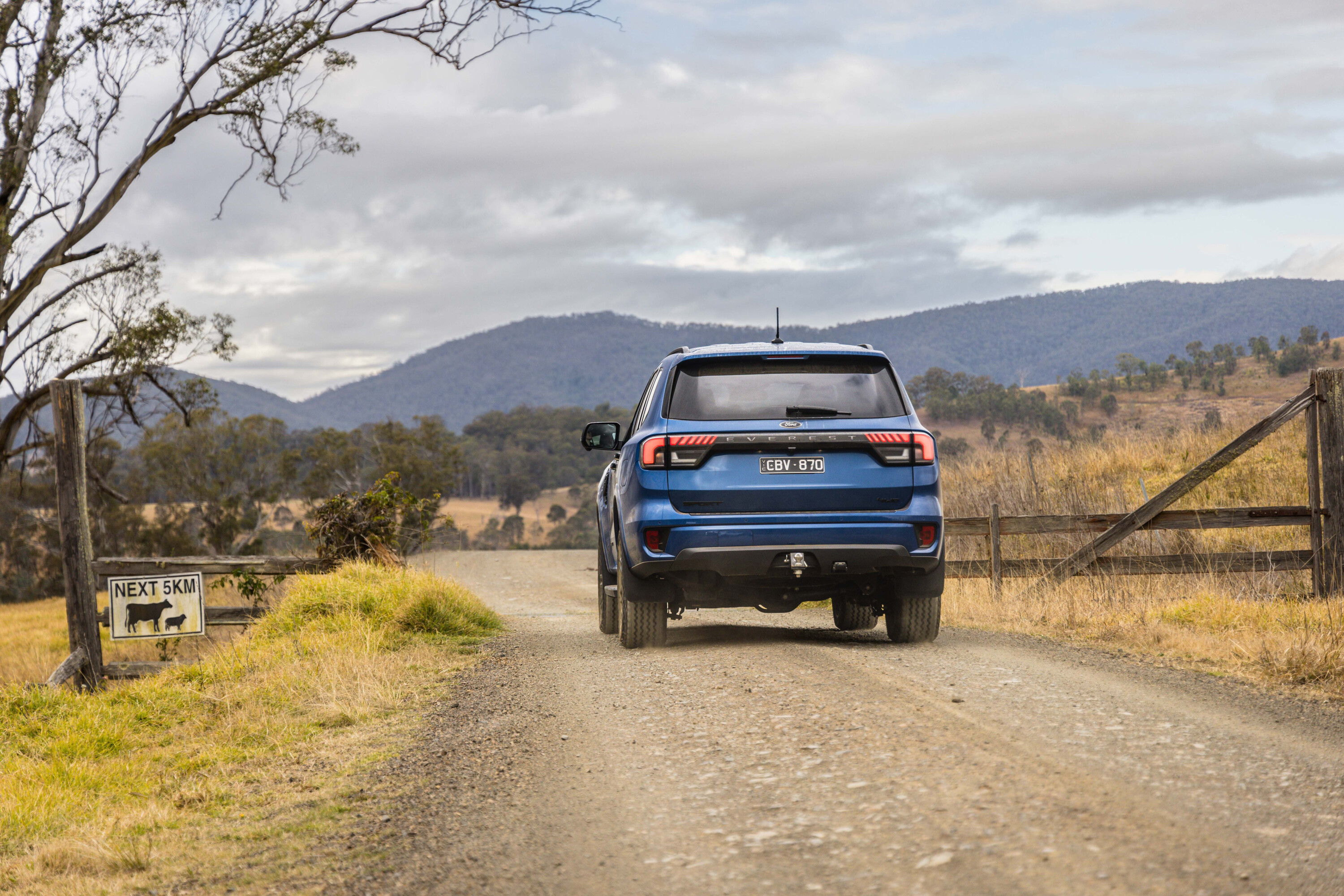THE TRACK had become fainter as we wound our way over the rough, rocky hills, before it disappeared completely. Somewhere we had missed a turn and, while I knew where I was on the Hema Navigator and could see where I wanted to go, getting to our destination wasn’t an option shown on any screens.
We dropped into a dry, narrow creek bed and wound our way farther into the hills, occasionally getting out and clearing scrub and tree branches so we could get through without ripping the vehicle’s duco and body panels to ribbons. Forced out of the ever-narrowing creek, we bumped across shaley rock ridges and bare, craggy hills, occasionally disturbing a euro or hill wallaroo out of their noon-day slumber.
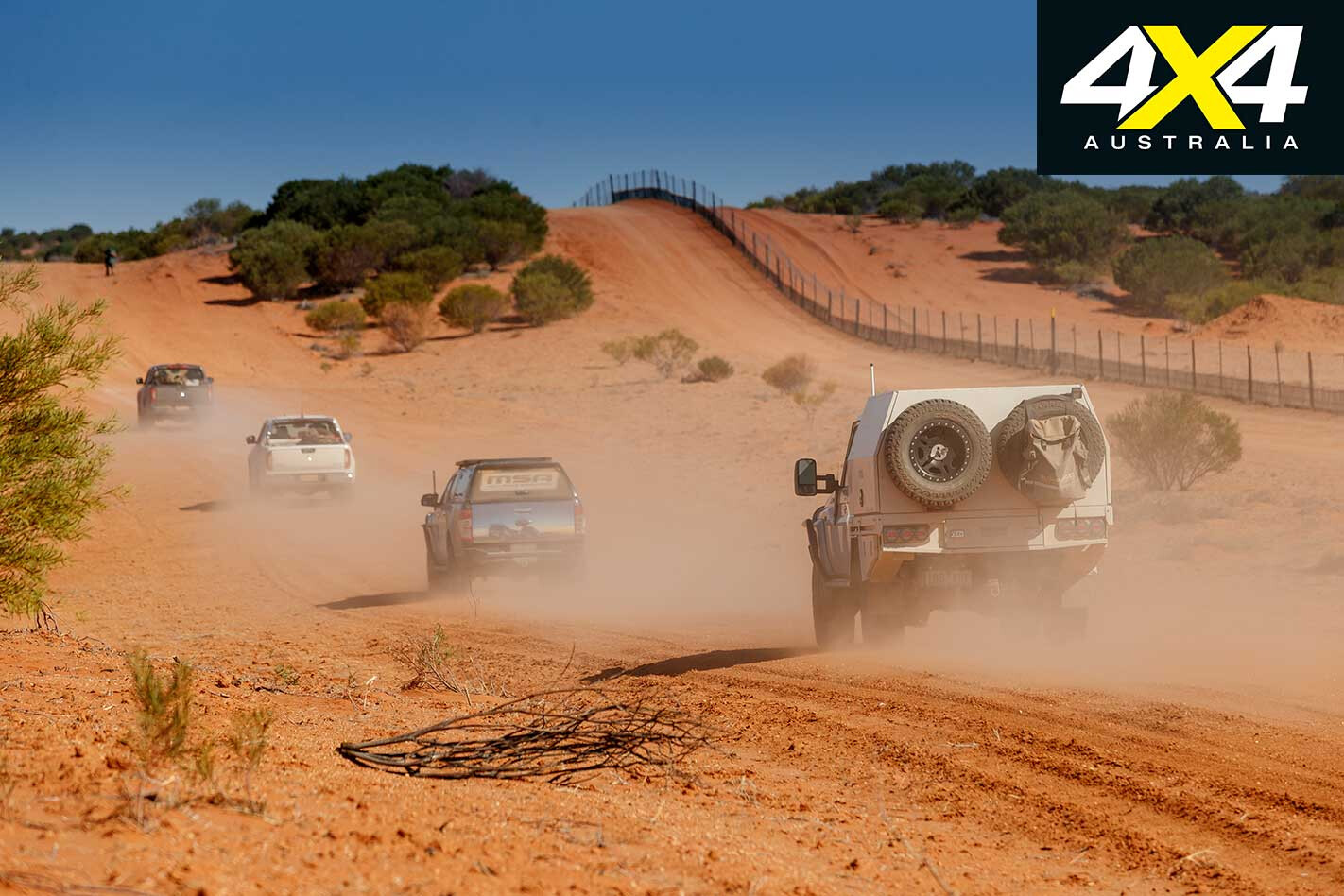
We finally crested a hill after five or so kilometres of slow cross-country travel and spied the ruins we had come to see. The Warata Mine (sometimes spelt Waratah) was originally worked in the late 1880s, but, like most of the mines and diggings in this remote corner of NSW, it was never a rich mine or goldfield.
Gold had first been discovered near Mount Poole in 1880, and by early 1881 more than 2000 diggers were scrambling over the hills looking for any sign of colour. A lack of water and any rainfall, however, kept gold production to a minimum. Still, the townships of Tibooburra and Milparinka sprang into existence to service the influx of people, while pioneer graziers battled the elements to form vast sheep and cattle properties.
In the late 1880s conditions were so dire in these remote places the NSW government sent a relief party to the fields via the Ghan Railhead in SA at Farina. By 1902 the fields were yielding very little gold and most of the miners had departed, leaving the buildings at Milparinka to slumber and decay beneath the blazing sun.
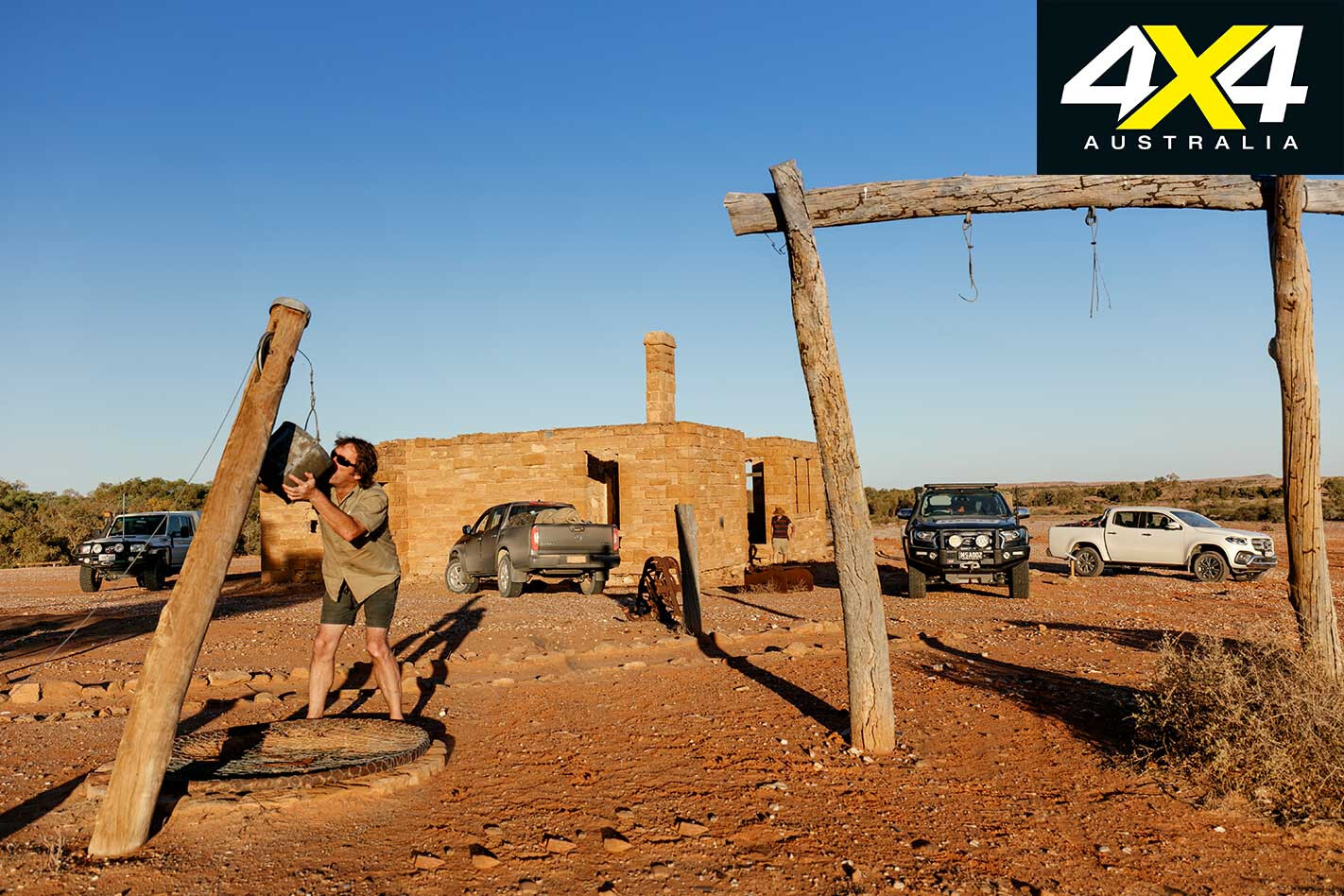
Our quest had started a few days earlier in the once great mining colossus of Broken Hill. While mining still goes on there, the great silver and lead mine that brought prosperity and people to this part of NSW is just a shadow of its former self.
Still, the town is a great place to start any travel in western NSW and boasts a great heritage along with some of the finest art galleries and friendly drinking holes you can find anywhere.
As we’ve been here before on numerous occasions we didn’t want to dally too long, so we pointed our little convoy of Mercedes-Benz X-Class dual-cab utes north and headed to the once rich mining enclave and then on to the ghost town and now arty hamlet of Silverton.
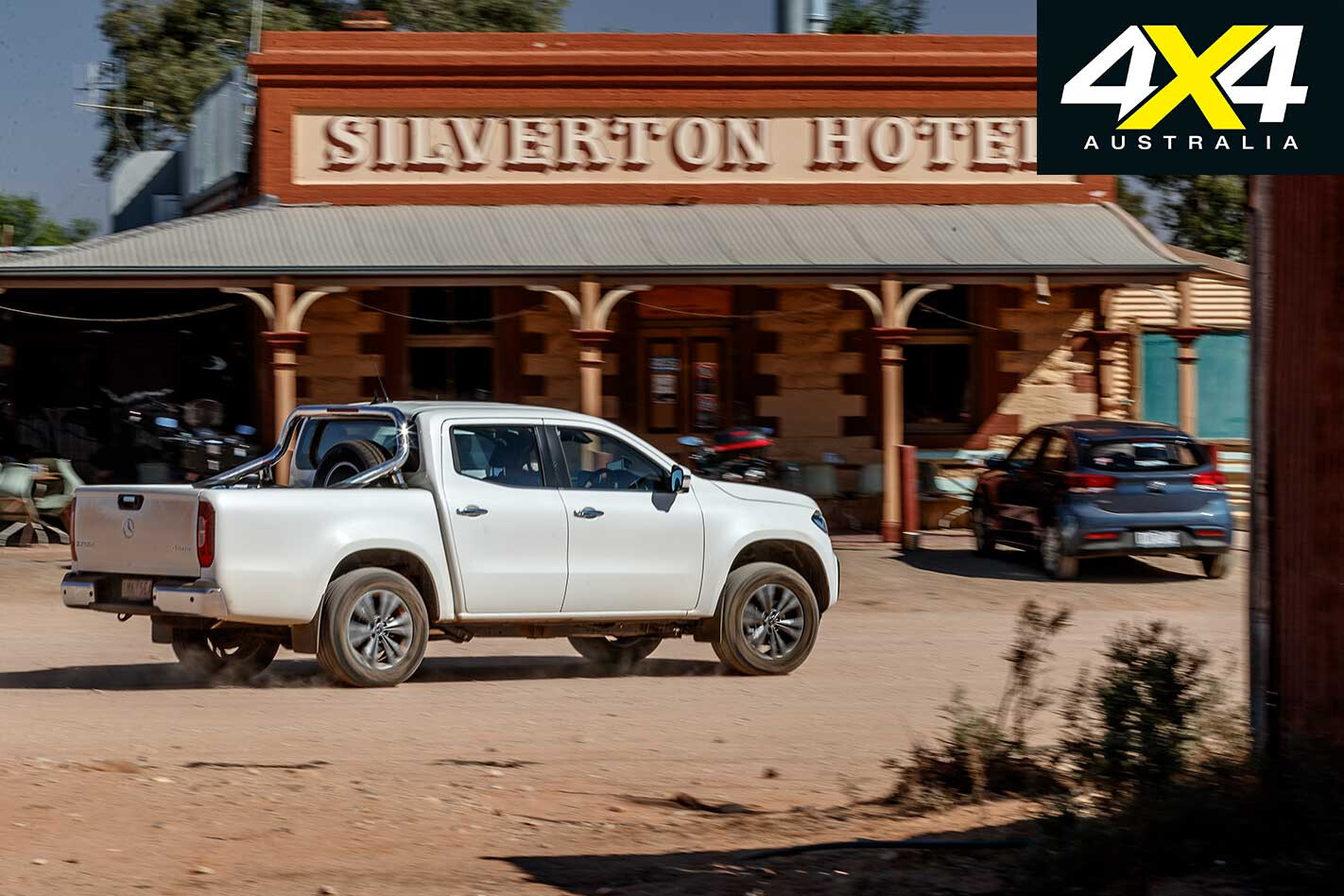
While Silverton has its fabulous pub, a range of art galleries and a museum, along with a scattering of mining ruins nearby, one of the places not to miss is the Daydream Mine, which began operating in the 1880s.
A smelter was built nearby, and by 1885 more than 500 people living in the nearby town of Wilson were relying on the mine and the smelter for their day-to-day existence. Today the mine is very much like it was, with small shafts and drives leading deep underground to where the rich ore body spread its veins of silver through the rock.
While it is a ‘tourist mine’, it’s about as close as you can get to what an old mine was like, with its dark tunnels, rough walkways, low ceilings and cramped working conditions. We had Ruth, the owner of the mine, lead us through the labyrinth, and it was a memorable experience, not only for the insight into how the early miners worked and lived but also to learn how short these early miners were – my helmet took a hammering from the low ceilings.
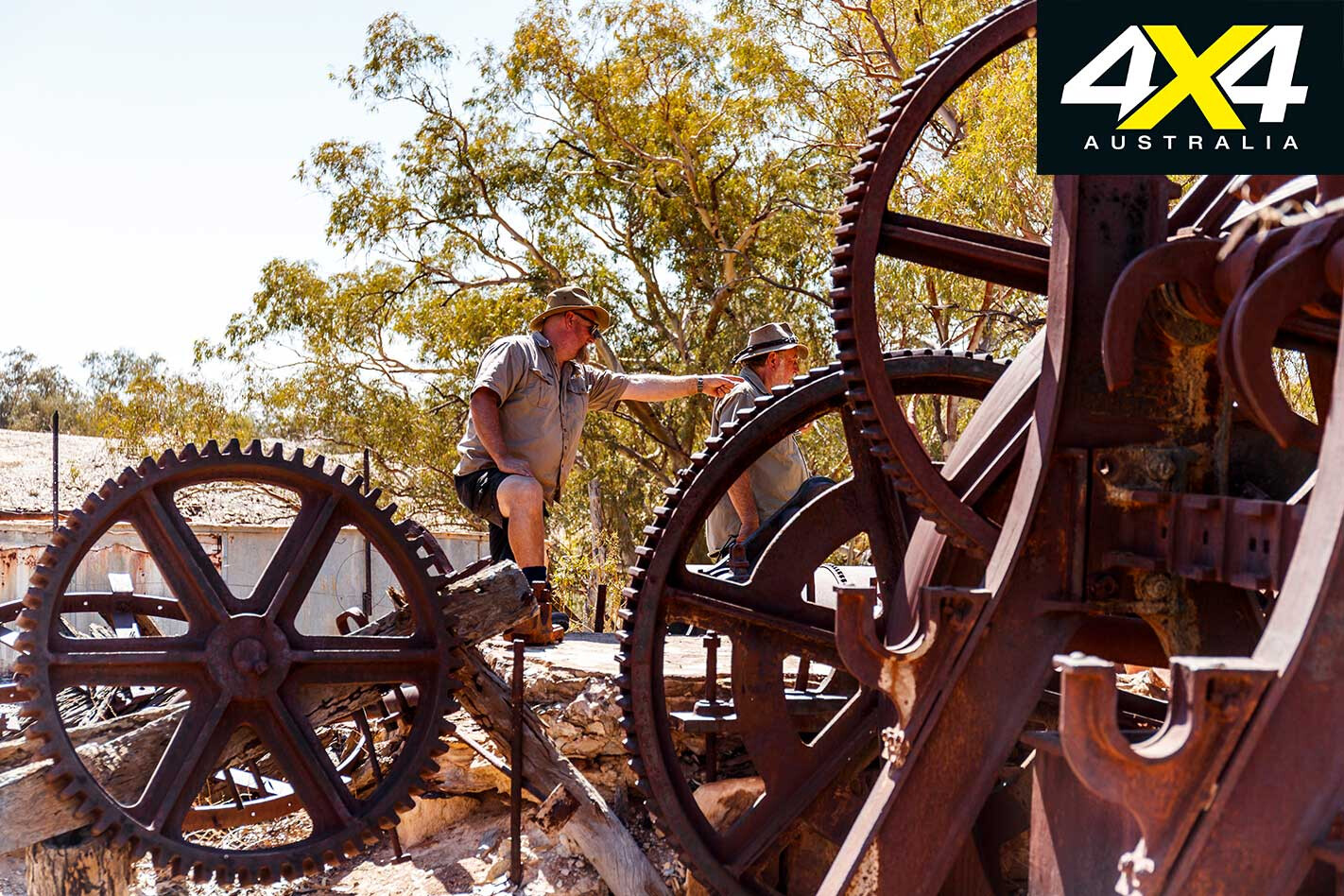
We spent the next few nights at Eldee Station, one of the many farm stays you can experience in the Corner Country of NSW. Located on the edge of the Barrier Range north of Silverton, Eldee Station not only acts as a great base to explore the area, but it has a number of 4WD tracks that take you deep into the rugged hills and into hidden glens, where trickles of life-giving water act as magnets for the area’s wildlife. Back at the homestead, Steve and Naomi Schmidt are the congenial hosts and offer accommodation, camping, meals and refreshing drinks.
Heading north on back roads that only see the occasional station hand or property owner, we traversed rolling saltbush and gibber plains, the lines of creeks etched with the dark green of acacia and mulga trees.
It was here, in a rocky section of range country, where one of the Mercs blew a tyre. Not that it was the vehicle’s fault; rather the vehicle was supplied, as most utes are, with ‘Passenger’ or ‘P’ rated tyres, which we have found to be completely inadequate for the job in the outback. To travel out here comfortably and safely a vehicle needs, at the very least, a ‘Light Truck’ (LT) tyre.
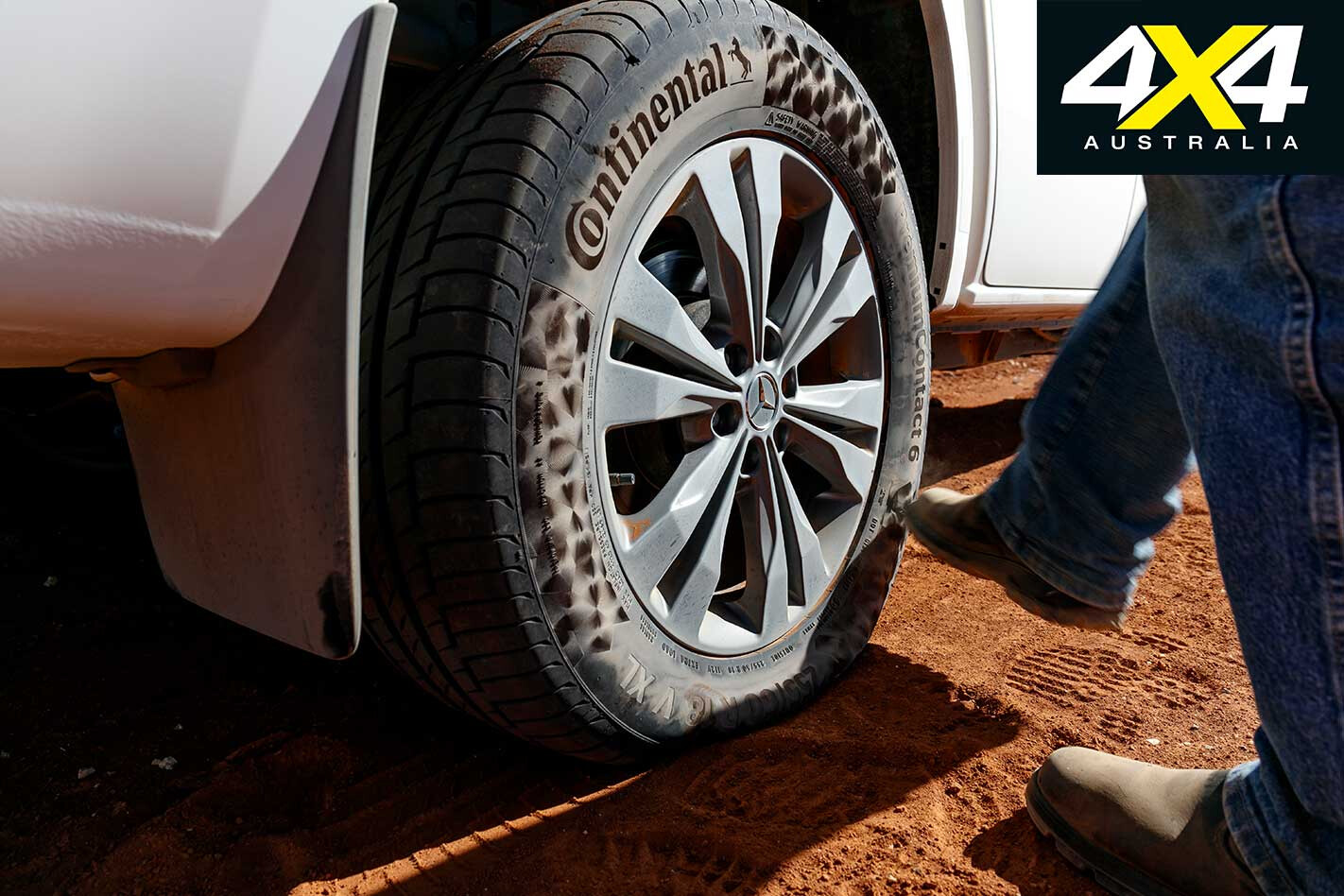
At Smithville House, the major depot for the maintenance crews working on the Dog Fence, we met up with Dave, the NSW operations manager of the Border Fence Maintenance Board, and Sharon Harrington.
We yarned a bit about his job and the people living and working along the Dog Fence that stretches more than 600km along the NSW/SA and NSW/Qld border. The fence’s job is to keep wild dogs out of the sheep flocks of NSW and south-east Australia and, while some may be critical about its effectiveness, there is no doubt sheep farming in Outback NSW would be finished without it.
We also chatted about how the roads that follow beside the fence are private roads in the interests of workers’ safety, and severe fines can be levelled against anybody who uses them. A section of public road travels close to the fence (about 20 to 30m from it) near Smithville House, so there is no need to travel on the private road.
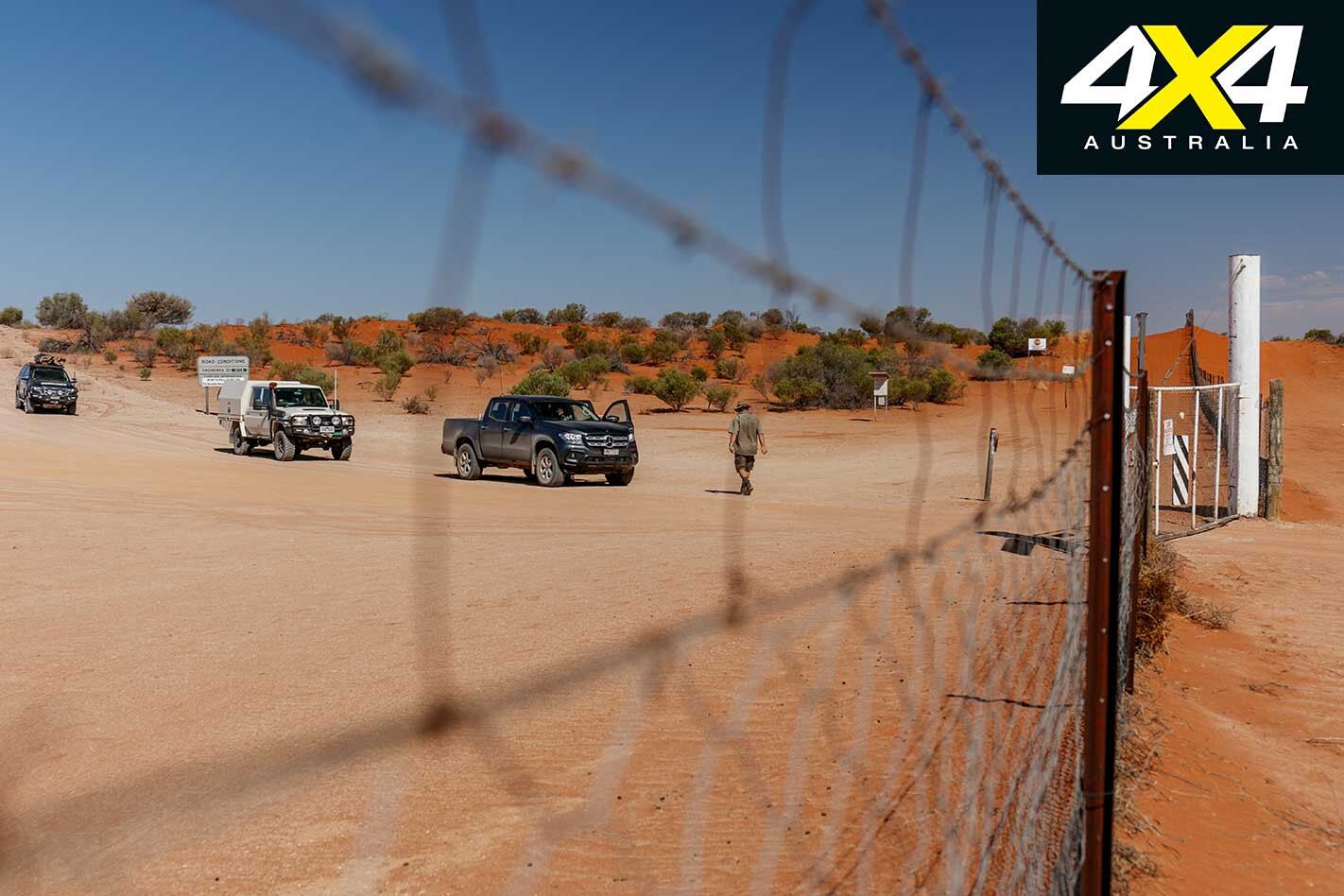
Later that day we rolled into Milparinka, camped down on the creek and enjoyed a few beers at the local pub. Once the hub of a small goldfield the town was deserted for some time, but it has had a revival since the local community got together and restored the impressive stone buildings.
The reopening of the pub a couple of years back also brought life and colour back to the small oasis, so don’t miss it on your travels through Corner Country.
Charles Sturt, the great Australian explorer, was the first European in this region in 1844, and he and his men were trapped at nearby Depot Glen (just north of Milparinka) for six months, as the country, caught in a vicious drought, dried up in front and behind them.
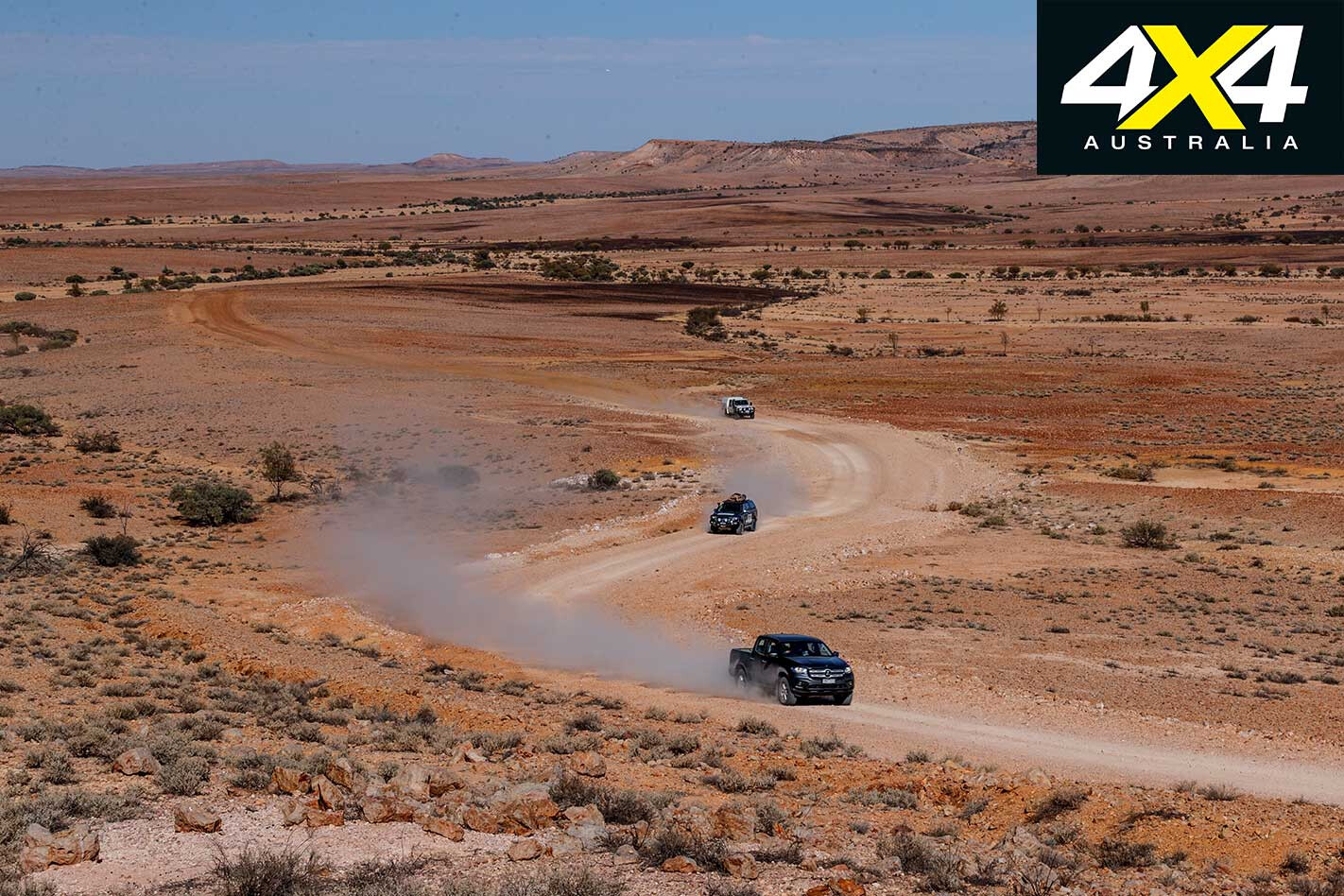
Notwithstanding the dry conditions, Sturt led one or two of his men on flying recce trips west, north-west and north-east, leaving the remainder in camp to build a great cairn of stones on what we now know as Mt Poole.
Named after James Poole, Sturt’s 2IC, Poole died of scurvy while they were trapped here; the only fatality on that incredible expedition that saw, amongst other things, the discovery of Cooper Creek, Eyre Creek and the eastern edge of the Simpson Desert.
After checking out Depot Glen and Mt Poole we headed via the back way to Tibooburra and, with the permission of the local land owner, began our foray into the hills looking for the Warata Mine.

At Tibooburra, while most of us checked out the town, its surrounds and the two famous pubs, one of our vehicles was rushed south on the main road to Broken Hill to get some better tyres, before we pushed on across Sturt NP to Cameron Corner and its friendly pub, store and camping ground.
The country was dry and hot and the park, which is often alive with kangaroos, was near devoid of them, most farther south in the well-watered country of the sheep and cattle graziers.
The next day our little party, now in South Australia, crossed the roller-coaster dunes of the Strzelecki Desert to come to the track and creek of the same name. We turned north across a bleak landscape, the normal dry and dusty channels of the creek being dotted with low scraggly trees, as water hasn’t flowed here for a long time.
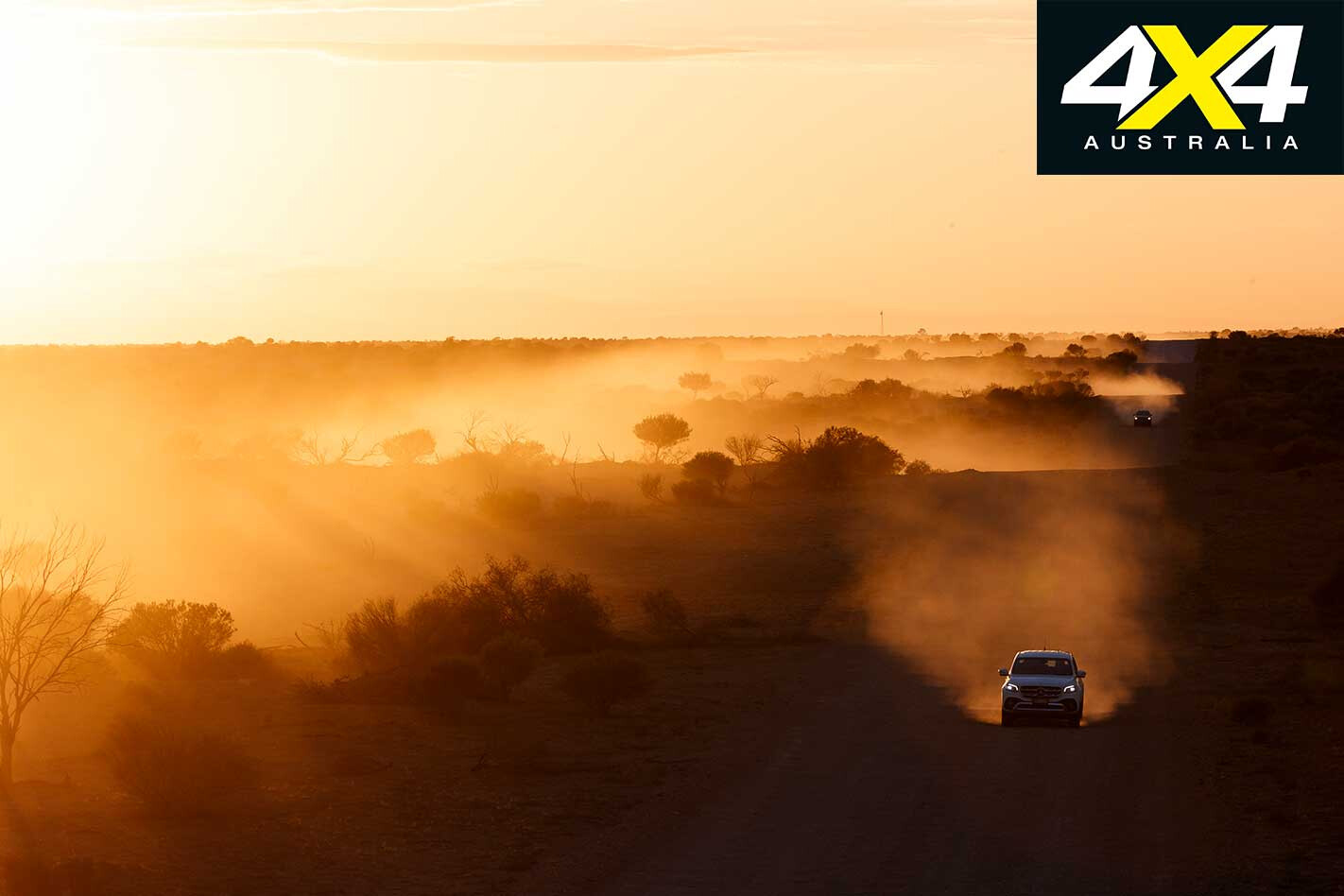
Along the way and sometimes close to the track were the nodding arms of beam pumps lifting their precious load of oil and gas, which is then pumped to a central processing plant before being pushed along kilometres of underground piping to the cities of southern and eastern Australia.
Such industrious activity has transformed this region of Australia, the most obvious of which is the good gravel roads that lead not only to gas- and oil-processing plants but also to our destination, Innamincka.
Across the border in Queensland such progress in its oil fields has seen the snaking ribbon of bitumen extend from the border all the way to Brisbane. It is the easiest way to get to Innamincka and the Cooper… perhaps too easy for us four-wheelers.
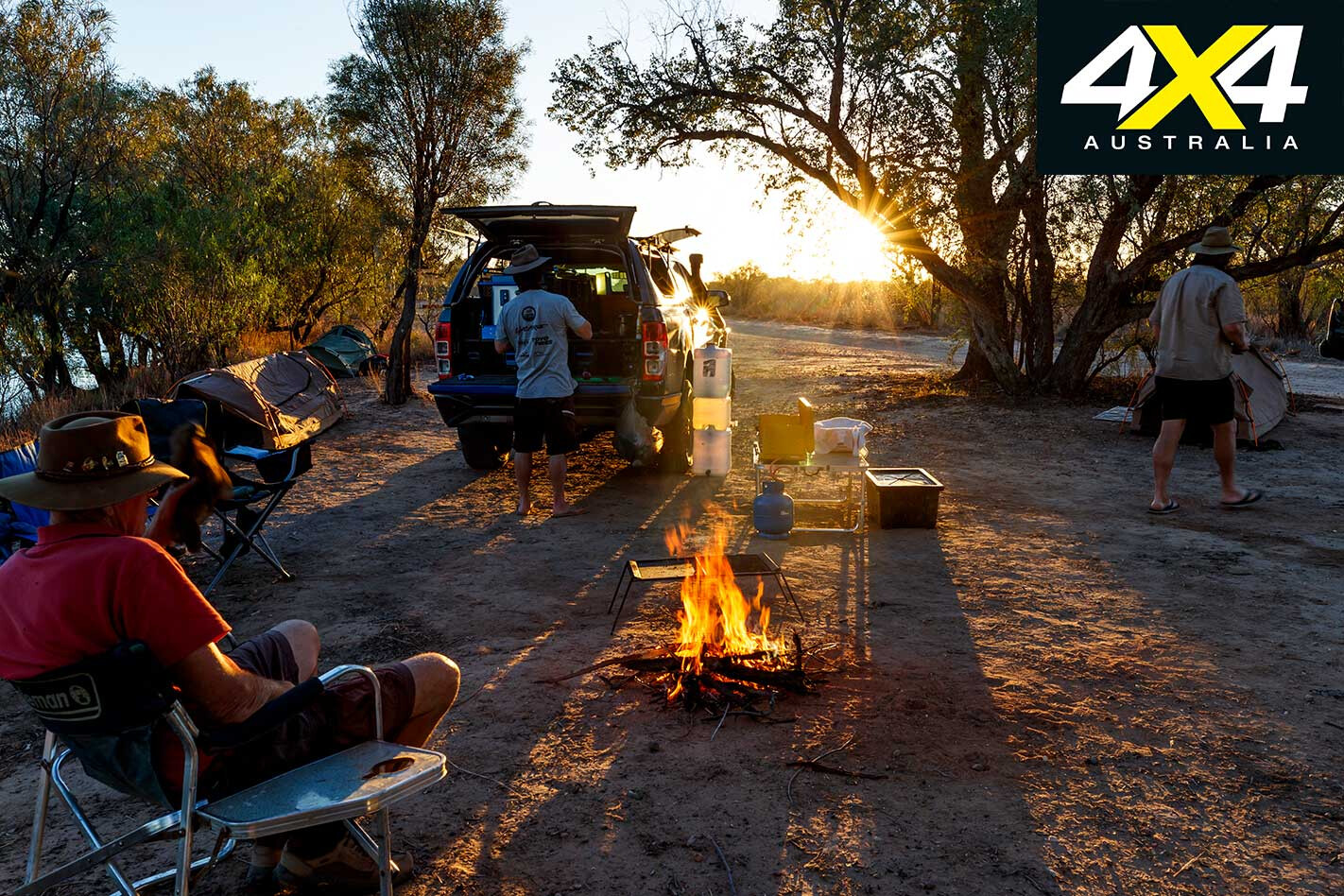
We spent the next few days around Innamincka and Cooper Creek, our luck holding true with water flooding down the creek from rains in central Queensland a few weeks previously. Such a flow adds a little piece of magic to visiting here, and we couldn’t help ourselves as we went down to the causeway across the creek to drive through the running waters. It wasn’t necessary, of course, but it felt wonderful to do it after a few days of dry, hot and dusty outback travel.
We camped down on the ‘Town Common’ along the creek, trying to take advantage of some of the sparse shade thrown by the tall red gums that line this fabulous oasis, but also staying away from the overhanging branches that can drop at any time without warning.
It’s a top spot to watch the odd pelican paddling its way up and down the creek, or to admire the noisy birds perched in the trees. We even grabbed a kayak from the pub and enjoyed a paddle on this desert waterway; something I’d recommend to anyone who comes this way.
Warata Mining
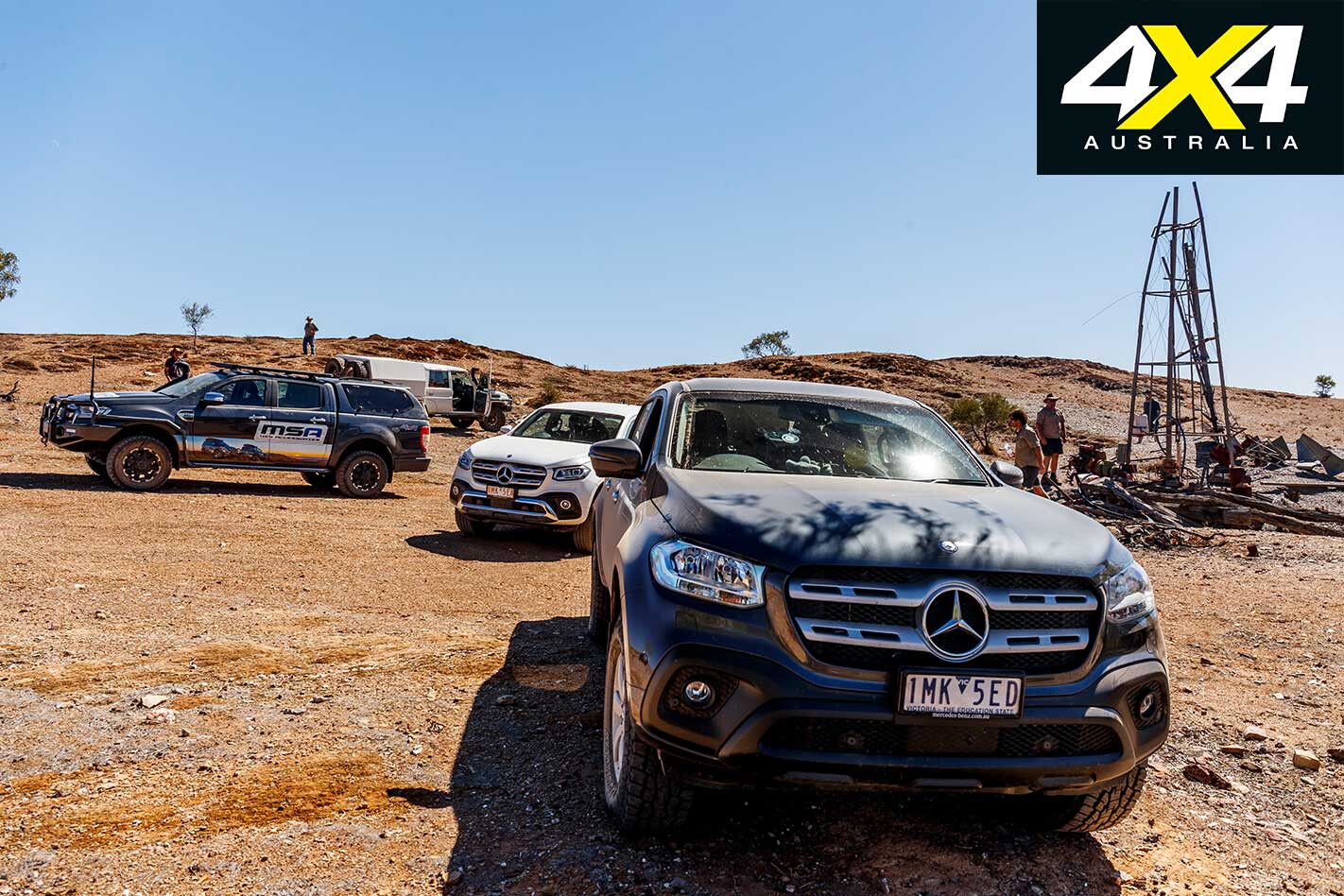
THE old stamper and boilers that litter the remote Warata site today are some of the most complete and poignant in the region, while mine shafts and scrapes dot the surrounding hillsides.
Claim pegs and strips of coloured tape that flutter in the breeze are a sign that more modern surveys for minerals have recently taken place here; let’s hope any further exploration or mining doesn’t destroy the heritage of this mine site.
This happens too often in other places around Australia when modern miners move in with their heavy machinery and insatiable desire to move mountains in the quest for gold.
Burke & Wills

While the creek had been “discovered” by Sturt, it was the doomed expedition of Burke and Wills, 15 years later, that welded the stream into the Australian psyche. Here along this verdant waterway, where hundreds of Aboriginal people lived and thrived for hundreds of years, Burke and Wills died, after they crossed Australia from Melbourne to the Gulf of Carpentaria.
It was a dazzling and bungling expedition right from the start, but to visit the places where their bodies were discovered is still a right of passage many Australians feel they should do.
A little farther east of Innamincka at the famed Dig Tree, where the Burke and Wills expedition had set up a major depot on the north bank of the Cooper, the tree that marks the spot is visited by hundreds of travellers each winter tourist season.
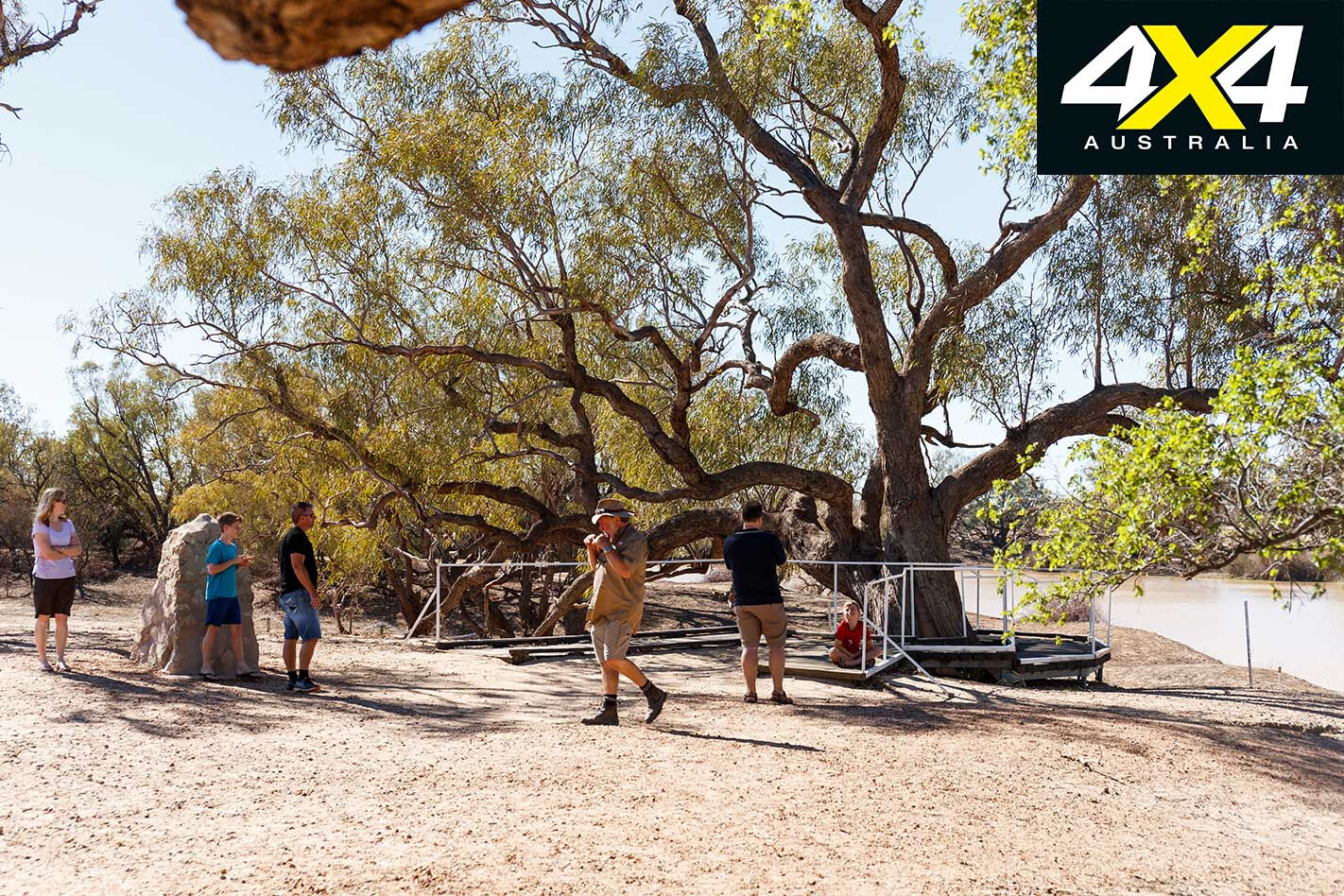
We did the same and wondered how these brave men died and the circumstances that saw them come so close to success. With a salute to their courage and a doff of the hat to their memory, we turned eastward and headed to another great pub on the banks of yet another waterhole… but that’s another story.
Travel Planner
For camping and up-to-date travel info, start at these sites: – Corner Country: outbacknsw.com.au – Daydream Mine: daydreammine.com.au – Eldee Station: eldeestation.com – Innamincka Hotel: innaminckahotel.com.au – Innamincka Trading Post: innaminckatp.com.au

